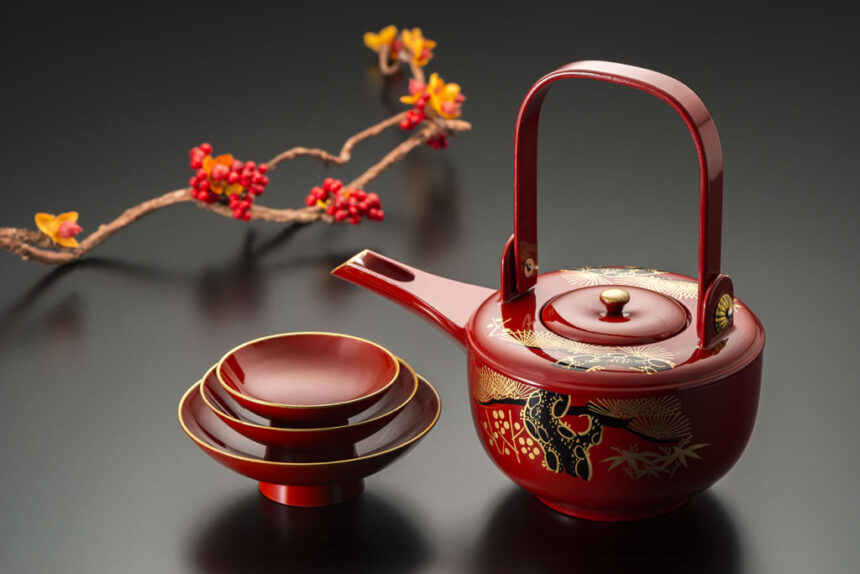Laquerware is more than just a feast for the eyes; it’s a celebration of culture and craftsmanship that has stood the test of time. Imagine exquisite pieces, gleaming with rich colors, adorning your dining table or adding flair to your living space. From its roots steeped in ancient tradition to its modern applications in home decor, laquerware captivates both artisans and enthusiasts alike.
But what makes it so special? Join us as we explore the enchanting world of laquerware—its history, benefits, and how you can incorporate these stunning creations into your lifestyle. Whether you’re an avid collector or simply curious about this unique art form, there’s something here for everyone!
What is Laquerware?
Laquerware is a traditional art form that involves applying layers of lacquer to various materials, primarily wood or bamboo. This technique creates a glossy finish while enhancing the durability and beauty of the piece.
The process begins with preparing the base material, often intricately carved or shaped. Artisans then carefully apply multiple coats of natural resin mixed with pigments. Each layer is meticulously polished to achieve that signature shine.
Beyond its aesthetic appeal, laquerware showcases skilled craftsmanship passed down through generations. Every item tells a story, reflecting cultural significance and artistic expression unique to its origin.
You’ll find laquerware in different forms—bowls, trays, boxes—and it’s celebrated for both functional and decorative purposes. Its vibrant colors and elaborate designs make it an eye-catching addition to any setting.
The History and Culture of Laquerware
Laquerware boasts a rich tapestry of history, woven across various cultures. Originating in East Asia, this art form dates back thousands of years, with roots tracing to China during the Shang Dynasty.
Craftsmen perfected the technique of applying natural resins from trees, layering them meticulously for durability and shine. This skill spread through trade routes, influencing artisans in Japan and Southeast Asia.
In Japan, laquerware evolved into an intricate craft known as “Urushi,” celebrated for its deep colors and elaborate designs. Each piece tells a story—often inspired by nature or mythology—making it unique.
Culturally significant, laquerware has been used not only as functional tableware but also as ceremonial items in rituals and celebrations. Its beauty transcends mere utility; it’s treasured as heirlooms passed down through generations.
Benefits of Using Laquerware
Laquerware offers a stunning visual appeal. Its glossy finish and rich colors can elevate any table setting or decor.
Durability is another key benefit. Crafted from layers of lacquer, this dinnerware is resistant to scratches and moisture. It stands up well to daily use, making it perfect for both casual meals and formal gatherings.
Moreover, laquerware is lightweight. Unlike ceramic or stoneware, it’s easy to handle without the fear of breaking it during transport or storage.
Cleaning laquerware is a breeze too. A simple wipe with a damp cloth keeps it looking pristine without the need for harsh chemicals.
Its unique craftsmanship often tells cultural stories through intricate designs. Each piece serves as an art form that reflects tradition while being functional in modern homes.
Tips for Choosing and Caring for Laquerware
When selecting laquerware, consider the craftsmanship. Look for intricate designs and smooth finishes that indicate quality. Authentic pieces often have a depth of color that’s hard to replicate.
Pay attention to size and functionality as well. Choose items that suit your space and intended use without feeling bulky or out of place.
Caring for laquerware requires gentle handling. Avoid harsh chemicals when cleaning; instead, use a soft cloth with mild soap if needed. Keep it dry, as moisture can damage the finish over time.
Store your pieces in a safe spot away from direct sunlight to prevent fading. If you notice scratches, don’t panic—many imperfections can be polished out with care.
Embrace its uniqueness! Each piece tells a story through its design and history, making it more than just dinnerware or decor but a cherished part of your home.
Different Uses for Laquerware in Home Decor
Laquerware adds a touch of elegance to any space. Its glossy finish and vibrant colors make it perfect for decorative accents throughout your home.
Consider using lacquered trays as stylish catch-alls on entryway tables or coffee tables. They’re not only functional but also serve as eye-catching centerpieces.
In the dining room, lacquered bowls can elevate your table setting. Use them for fruits or snacks during gatherings, impressing guests with their unique flair.
Lacquered boxes are ideal for storage solutions while doubling as art pieces. Place one on a shelf or dresser to keep small items organized and accessible.
Don’t overlook wall decor! Lacquerware wall hangings can enhance your interior style, offering depth and texture that draws the eye in.
With such versatility, laquerware seamlessly blends beauty with practicality in every corner of your home.
Comparison to Other Types of Dinnerware Materials
When it comes to dinnerware, materials vary widely in aesthetics and functionality. Porcelain is often lauded for its elegance and durability. However, it lacks the warmth that lacquerware brings to the table.
Stoneware offers a rustic charm but can be heavy and prone to chipping. Lacquerware, on the other hand, combines lightweight properties with stunning visual appeal.
Glass dinnerware provides a modern touch but may not have the resilience of lacquer pieces against heat or moisture. Additionally, glass can feel cold compared to the inviting surfaces of lacquered items.
Plastic dishware is practical for everyday use but doesn’t offer the same level of artistry or tradition as lacquerware does. For those looking for beauty coupled with functionality, lacquer stands out amongst these options while also being easier to clean than many alternatives.
Sustainability and Eco-Friendliness of Laquerware
Laquerware stands out not just for its beauty, but also for its commitment to sustainability. Crafted from natural materials like wood and resin, it offers an eco-friendly alternative to plastic dinnerware.
The production process of laquerware often emphasizes artisanal techniques passed down through generations. This means each piece is made with care and intent, minimizing waste and environmental impact.
Furthermore, the longevity of laquerware sets it apart. With proper care, these items can last a lifetime or longer. By choosing durable products over disposable options, you’re making a positive choice for the planet.
Many artisans prioritize sustainable sourcing practices when selecting their materials. Supporting these craftspeople helps promote responsible harvesting methods that benefit both communities and ecosystems alike.
This harmonious blend of artistry and environmental consciousness makes laquerware an appealing option for those who value both style and sustainability in their home decor choices.
Final Thoughts
Laquerware is more than just dinnerware; it is a celebration of artistry and tradition. Its rich history, steeped in cultural significance, enhances any dining experience or home decor setting. The benefits of using laquerware extend beyond aesthetics—they include durability and versatility that few materials can match.
When selecting the perfect piece, consider its craftsmanship and how to care for it properly to ensure longevity. Laquer ware’s potential uses are vast, from serving trays to decorative bowls, making it an ideal choice for various occasions.
Compared to other types of dinnerware materials like glass or ceramic, laquer ware stands out due to its unique finish and lightweight nature. Additionally, many laquer pieces are crafted with eco-friendly practices in mind, appealing to sustainability-conscious consumers.
Choosing laquer ware means embracing beauty while also honoring time-honored traditions passed down through generations. It invites warmth and elegance into your space—qualities every home deserves. Whether for everyday use or special gatherings, incorporating laquer ware elevates the ordinary into extraordinary experiences that linger long after the meal has ended.





